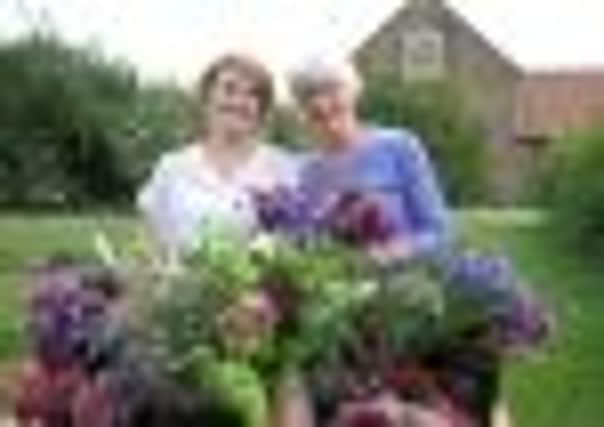Flowers a cut above the rest


The price of roses is predicted to have risen four-fold by next Tuesday, giving a further boost to the overall value of the Valentine’s Day market which is expected to be over £200m this year.
Most of these flowers are sold through supermarkets who import them from places like Ecuador, Israel, Florida and Malaysia. But the biggest exporters to us are Colombia – which ships them in specially chartered aircraft out of Bogota – and Kenya.
Advertisement
Hide AdAdvertisement
Hide AdOver the course of a year the size of the UK cut flower market is staggering – something in excess of £2bn. The received wisdom has been that the environmental impact of this is broadly neutral. To set against a heavy carbon footprint left by bringing the flowers halfway round the world by air in a British winter is the fact that they have not had to be grown in heated greenhouses.
However there are indications that in Kenya for example, where the flower industry is mostly concentrated around Lake Naivisha north west of Nairobi, intensive growing is having an adverse effect on water levels, with a knock-on effect on the wildlife in a neighbouring game reserve. Now is the time for Britain to get its act together, believes Gill Hodgson. She launched Flowers From The Farm last spring and has already attracted around 100 members across the UK, including several here in Yorkshire.
Gill, whose family have farmed at Everingham near Pocklington for four generations, decided to take action when she realised that there was no national body or association to promote British flowers.
“Last year when I looked online for a body that I might be able to join, I realised no-one was in charge of British flowers,” she says.
Advertisement
Hide AdAdvertisement
Hide AdThe network is a way of sharing information and advice with other growers, and putting them in touch with florists looking to buy their products. One of its primary aims is to help newcomers to get started. East Riding of Yorkshire Council has allocated £10,000 and the money is being used by Gill for a pilot study involving 15 new growers based in East Yorkshire and Ryedale. There will be practical workshops on horticulture and floristry as well as garden visits and marketing advice.
The scheme starts this month to the end of August. “We hope that it will become a blueprint for how to set up as a flower grower and could be rolled out across the county.
“It will help us learn a lot about what people need to get started. There’s nothing like this happening anywhere else.
“The ‘buy British’ message has really got across in the food industry, but it’s not yet happened with flowers, although I think consumers are now starting to realise that it’s not right for flowers to be flown thousands of miles around the world.
Advertisement
Hide AdAdvertisement
Hide Ad“During the winter months I have no argument with that, but during the summer we could be self-sufficient in beautiful British flowers.”
Gill began selling bunches of her surplus flowers from a roadside stall outside her home. She grows an enormous variety of traditional cottage garden-style blooms on a plot less than an acre in size. She insists that very little space is required; many of the network’s members grow flowers in their gardens so the set-up costs are low.
“Covent Garden Market approached us to see where they could source more British-grown flowers and we’re linking up with the British Florists’ Association. There’s room for plenty more growers whether they’re already growing or looking for advice on how to get started.”
www.flowersfromthefarm.co.uk
Additional reporting: Michael Hickling